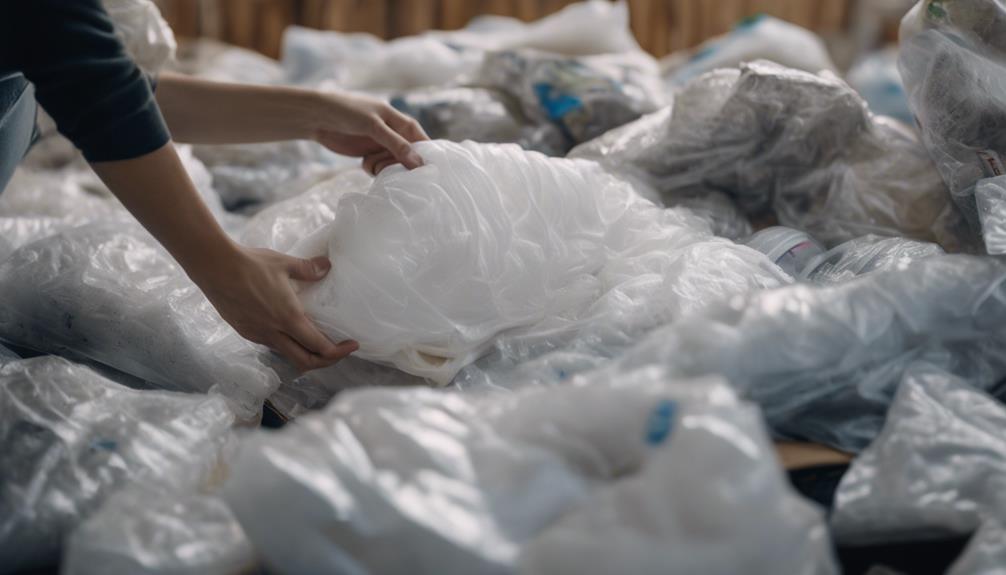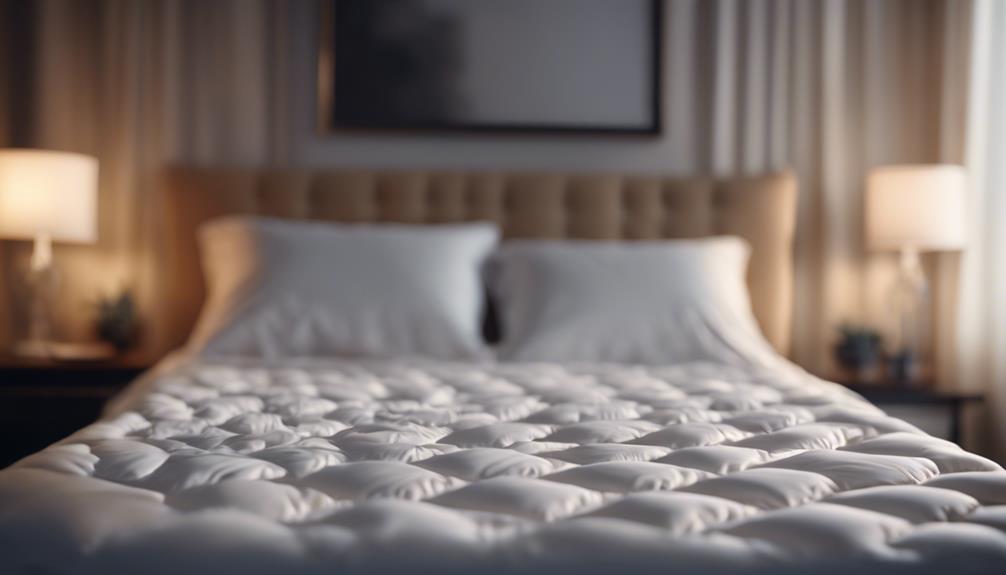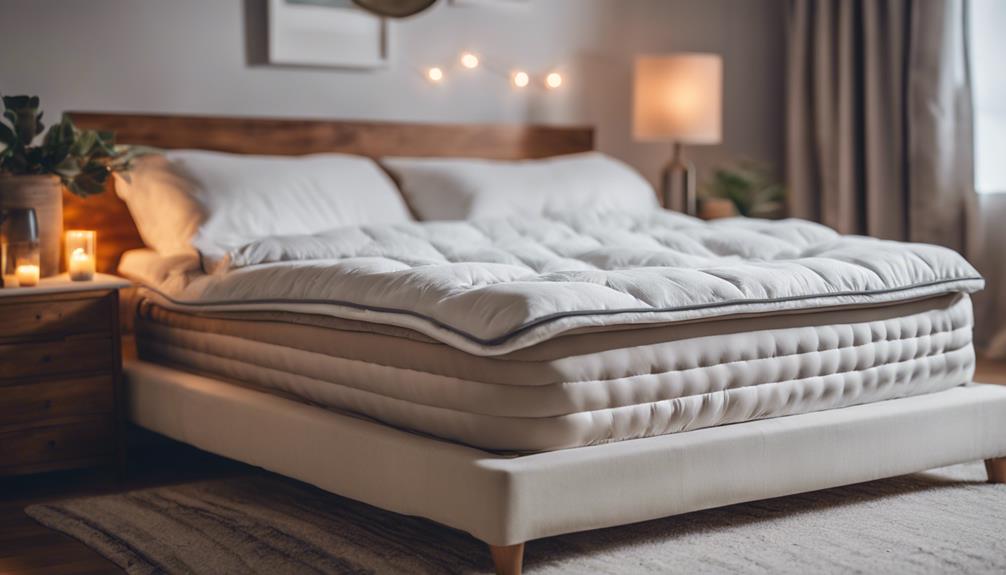Yes, mattress pads are recyclable, which is great for reducing waste and helping the environment. By examining the material used and donating to charity, we can prolong their life and contribute to sustainability. Many manufacturers offer recycling programs for the proper disposal of memory foam pads, which can result in new products being created while reducing environmental impact. By utilizing eco-friendly disposal methods and taking proper care, we can make a positive difference. Interested in learning more about eco-conscious ways to handle mattress pads? Keep exploring for additional insights on sustainable practices.
Key Takeaways
- Assess material type for recycling feasibility.
- Memory foam can be recycled at specialized facilities.
- Extend lifespan through proper cleaning and care.
- Contact manufacturers for recycling programs and guidelines.
- Donate to charity for reuse by families in need.
Importance of Recycling Mattress Pads
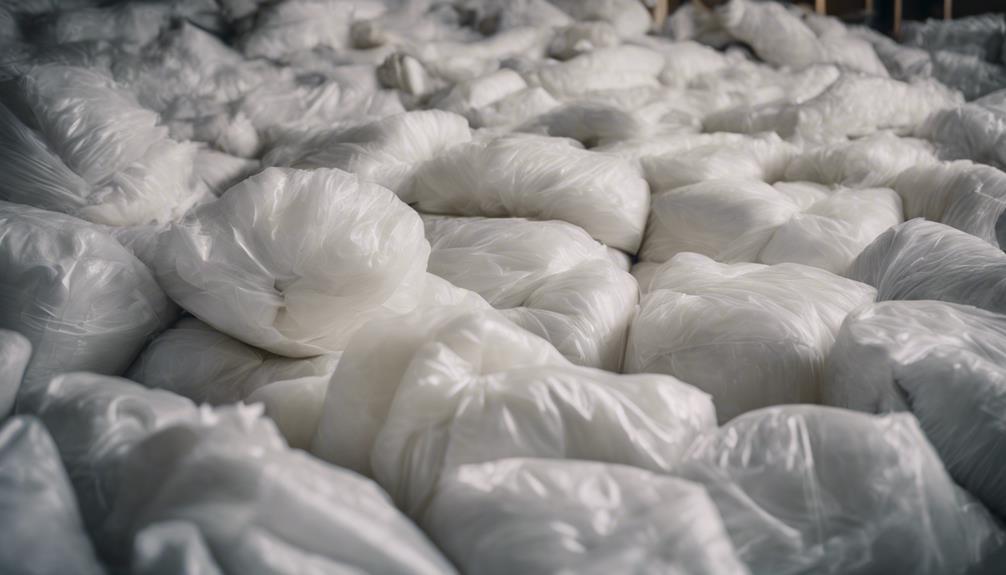
Repurposing mattress pads plays an essential role in reducing waste and protecting our environment. Recycling mattress pads is a simple yet impactful way to contribute to the conservation of resources and the sustainability of our planet. By diverting mattress pads from landfills and instead sending them to recycling centers, we actively participate in the effort to reduce waste and minimize our environmental footprint.
When we recycle mattress pads, we not only prevent them from taking up space in already overcrowded landfills but also help in the prevention of harmful chemicals from leaching into the soil. Many recycling centers accept mattress pads for processing and reuse, making it convenient for us to participate in this eco-friendly practice. Through proper recycling methods, we support a more sustainable waste management system that prioritizes the protection of our environment for future generations.
Mattress pad recycling is a small yet meaningful step towards a cleaner, greener planet.
Methods for Recycling Mattress Pads
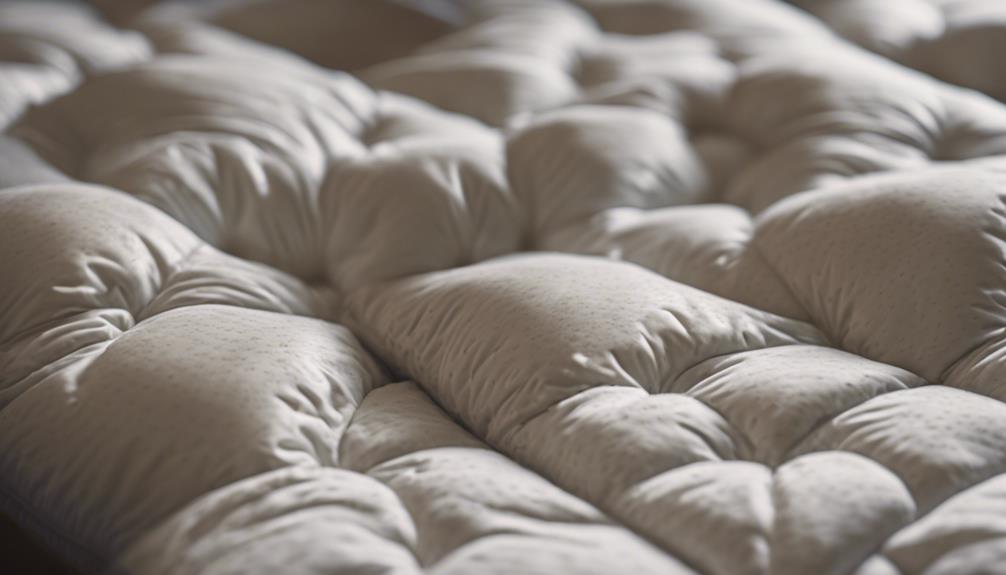
When considering methods for recycling mattress pads, it's important to first assess the type of material they're made from. Some mattress pads are crafted from memory foam, which can be recycled at specialized facilities designed for foam materials. These recycling centers play a significant role in reducing waste and minimizing the environmental impact of discarded mattress pads. By recycling memory foam mattress pads, we can extend their lifespan and prevent them from ending up in landfills, where they'd contribute to environmental harm.
Before dropping off a mattress pad for recycling, it's essential to clean and prepare it properly. This guarantees that the pad can be effectively recycled and repurposed. Advocating for foam recycling is also important, as it helps raise awareness about the benefits of recycling mattress pads and encourages more people to participate in these efforts. By working together to recycle mattress pads, we can make a positive impact on the environment and contribute to a more sustainable future.
Donating Mattress Pads to Charity
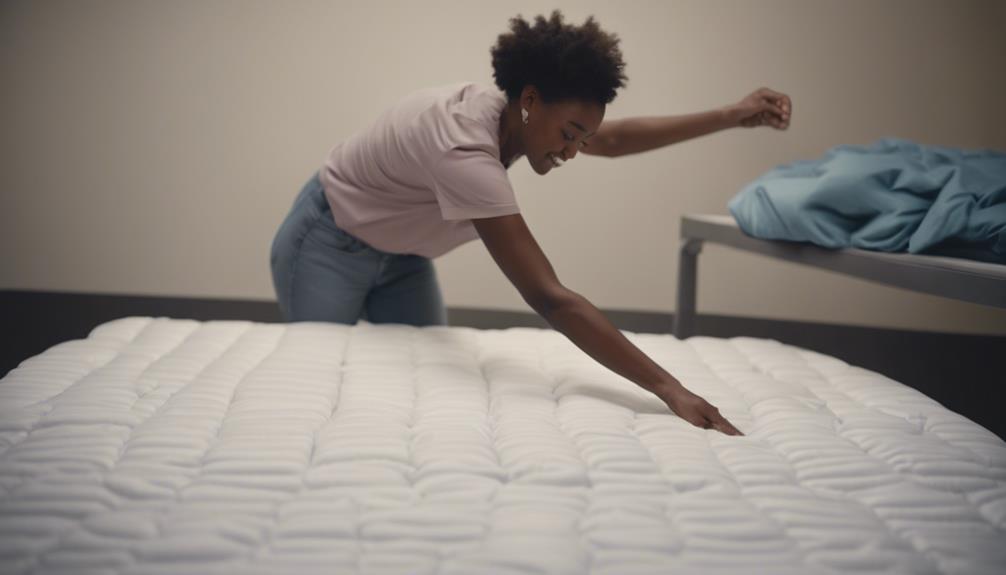
Donating mattress pads to charity provides essential bedding for families in need. When you donate a mattress pad, you're not just giving away an item; you're offering someone a comfortable place to rest and sleep.
Charities like The Salvation Army and Goodwill gladly accept mattress pad donations to support their community services. Local shelters and thrift stores also welcome donations of used mattress pads, ensuring that those facing financial difficulties can still have a crucial night's sleep.
These donation centers play a crucial role in helping low-income families access necessary bedding supplies. With over 80 donation centers across the U.S., it's easy to find a convenient drop-off location for your mattress pad donation.
Contacting Manufacturer for Recycling Programs
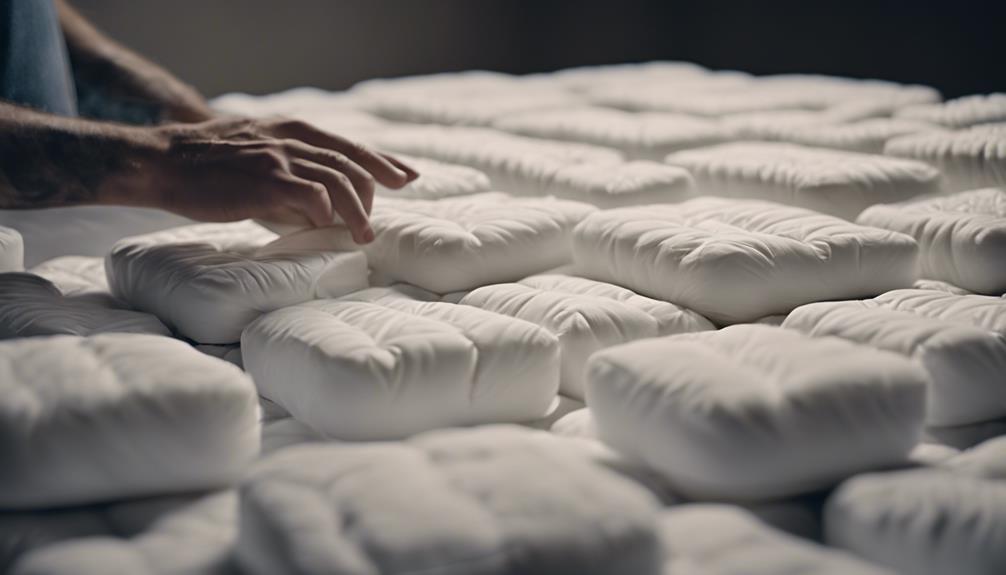
When considering the recyclability of mattress pads, it's important to reach out to the manufacturer to learn about their recycling programs.
Manufacturers often have specific guidelines and processes in place for recycling mattress pads, which can contribute to the sustainability of these products.
Manufacturer Recycling Programs
Many mattress pad manufacturers offer convenient recycling programs for their products, promoting environmental sustainability.
When considering how to recycle your mattress pad, reaching out to the manufacturer is a great first step. By contacting them directly, you can inquire about their specific recycling options and learn how to dispose of your pad responsibly.
These Manufacturer Recycling Programs often provide valuable information on foam recycling, guaranteeing that your old mattress pad is handled in an environmentally friendly way.
Taking advantage of these programs not only helps reduce waste but also supports the recycling of materials, contributing to a more sustainable future.
Sustainability of Pads
Contacting the manufacturer directly is essential to guarantee the proper recycling and disposal of your mattress pad, promoting sustainability and eco-friendly practices. When reaching out to the manufacturer, consider the following:
- Inquire About Recycling Programs: Manufacturers may have specific recycling processes in place for their products, including mattress pads.
- Acceptance of Old Mattress Pads: Some manufacturers may accept old mattress pads for recycling to promote sustainability and reduce waste.
- Ensuring Proper Disposal: By utilizing manufacturer recycling programs, you can make sure that your mattress pad is disposed of properly, contributing to eco-friendly practices.
Benefits of Recycling Memory Foam Pads
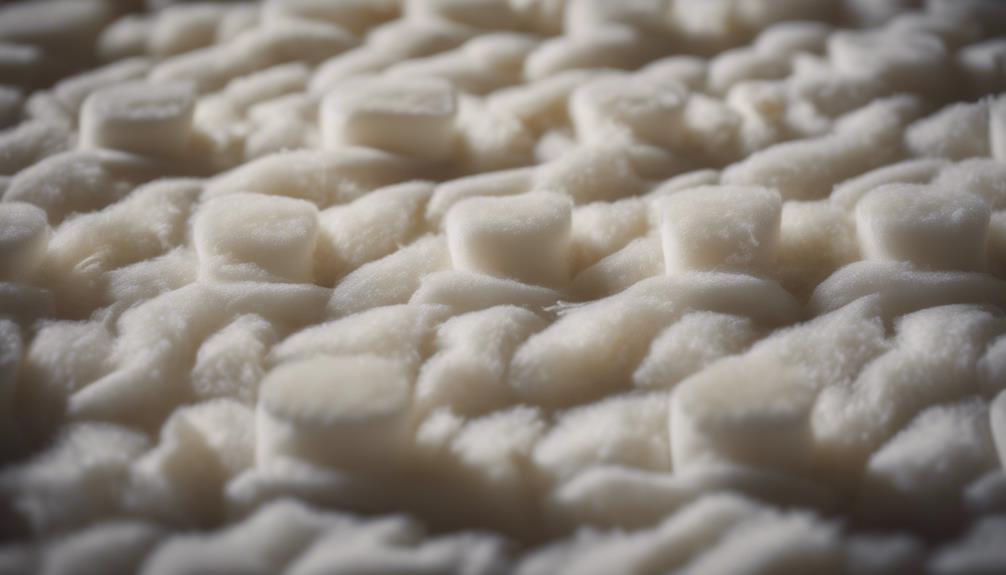
Recycling memory foam pads not only reduces waste but also plays an essential role in minimizing environmental impact. By choosing to recycle memory foam, we contribute to a more sustainable future.
When memory foam pads are recycled, they can be transformed into new products, decreasing the demand for raw materials and lowering greenhouse gas emissions associated with manufacturing processes. This conservation of energy and reduction of emissions help in the fight against climate change.
Proper recycling also prevents memory foam pads from ending up in landfills, where they'd take up space and contribute to environmental harm. Opting to recycle memory foam supports a circular economy, where materials are reused and waste is minimized.
Each recycled mattress pad is a step towards a greener world, where resources are used efficiently, and our environmental impact is reduced. Choose to recycle memory foam for a more sustainable tomorrow.
Recycling Centers Accepting Mattress Pads
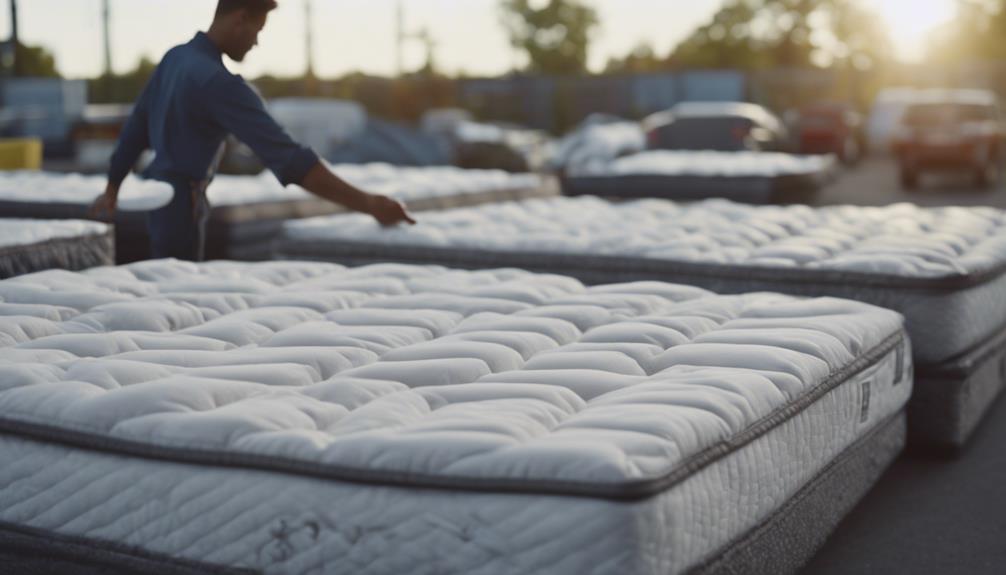
When looking to recycle mattress pads, it's essential to locate nearby recycling centers that accept them. Here are some key points to keep in mind when searching for recycling centers that accept mattress pads:
- Varieties Accepted: Many recycling centers welcome mattress pads made from foam, cotton, and wool. These centers play a vital role in diverting these materials from landfills, contributing to environmental sustainability.
- Specific Guidelines: Some recycling centers may have particular guidelines for accepting mattress pads. Before dropping off your mattress pad, be sure to check with the facility to confirm they can process it accordingly.
- Memory Foam Recycling: Mattress pads crafted from memory foam can often be recycled at specialized facilities equipped to handle this material. By ensuring these memory foam pads are properly recycled, you're actively participating in the circular economy and minimizing the environmental impact of waste disposal.
Eco-Friendly Disposal of Mattress Pads
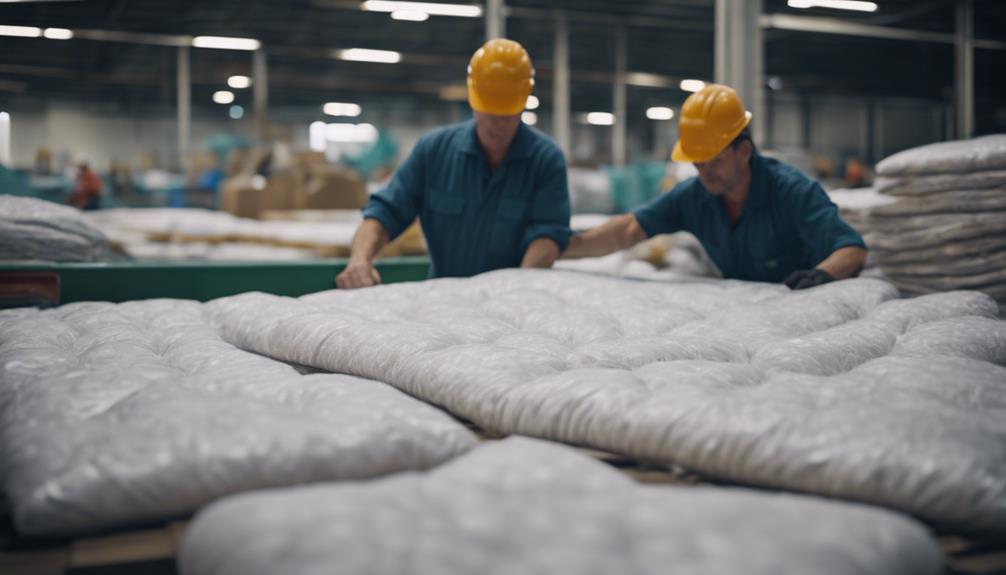
When contemplating the eco-friendly disposal of mattress pads, it's crucial to explore the recycling options available for these items.
Sustainable mattress pad disposal methods can vary, from repurposing materials to seeking specialized recycling programs.
Recycling Options for Pads
Looking for local recycling centers that accept mattress pads is a practical step towards eco-friendly disposal options. When considering the disposal of old mattress toppers, recycling centers offer a sustainable solution to keep them out of landfills. Here are three ways these centers can benefit you and the environment:
- Environmentally-Friendly Disposal:
Local recycling centers provide a convenient way to dispose of mattress pads responsibly, reducing waste and supporting environmental sustainability.
- Repurposing Materials:
Some organizations have mattress pad recycling programs that repurpose materials, giving your old pads a new life instead of them ending up in a landfill.
- Carbon Footprint Reduction:
Recycling pads not only helps extend the lifespan of landfills but also contributes to reducing the carbon footprint, making a positive impact on the environment.
Sustainable Mattress Pad Disposal
Sustainable disposal of mattress pads through recycling is a key practice in promoting environmental stewardship and reducing waste in landfills. Recycling mattress pads is an environmentally friendly solution that helps guarantee waste reduction and supports sustainable disposal practices.
Many recycling centers now accept mattress pads, allowing the materials like foam and fabric to be repurposed into new products. By responsibly recycling mattress pads, we contribute to a greener planet and minimize our environmental impact. This eco-friendly option not only aids in reducing waste but also supports the circular economy, where materials are reused, creating a more sustainable future.
Choosing to recycle mattress pads is a simple yet impactful way to make sure that these items are disposed of in a manner that benefits both the environment and society.
Extending Lifespan of Mattress Pads
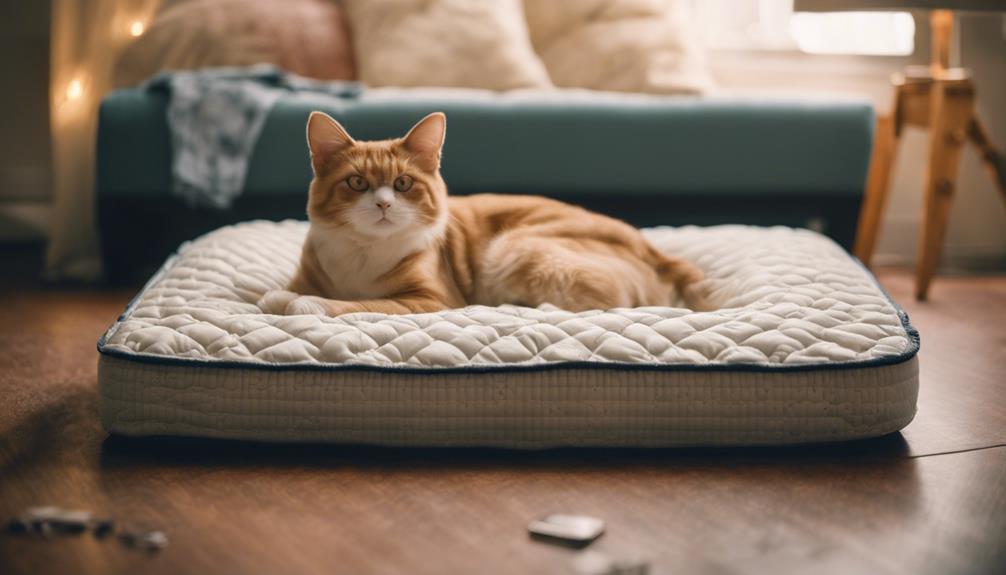
To maximize the longevity of mattress pads, consider incorporating regular cleaning and maintenance practices. Taking care of your mattress pad can help extend its lifespan, reduce waste, and contribute to environmental sustainability. Here are three simple ways to make your mattress pad last longer:
- Regular Cleaning: Washing your mattress pad according to the manufacturer's instructions can help prevent dirt and oils from building up, which can degrade the material over time.
- Proper Storage: When not in use, store your mattress pad in a cool, dry place to prevent mold and mildew growth. Avoid folding it for extended periods to maintain its shape and integrity.
- Rotate and Flip: To promote even wear, rotate and flip your mattress pad regularly. This can help distribute weight and pressure more evenly, preventing premature wear and tear on specific areas.
Sustainable Waste Disposal Practices
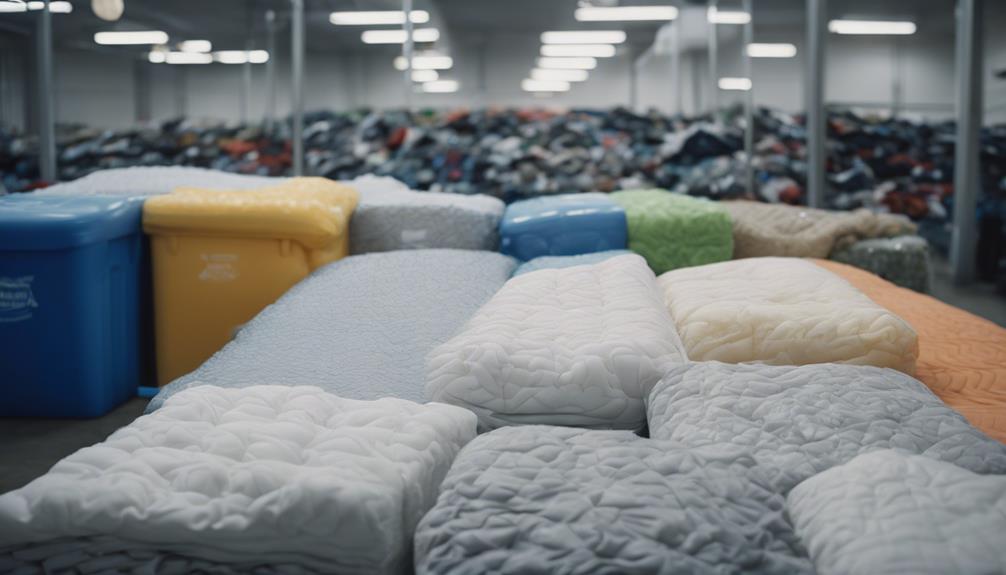
When it comes to sustainable waste disposal practices for mattress pads, we must prioritize eco-friendly methods that minimize environmental impact.
Recycling mattress materials and repurposing old pads are effective ways to contribute to a greener approach to waste management.
Eco-Friendly Disposal Methods
Considering the environmental impact, responsible disposal of mattress pads involves exploring eco-friendly options such as recycling and donation. When it comes to mattress pad disposal, here are some eco-conscious methods worth exploring:
- Recycling: Sending old mattress pads to recycling centers can reduce waste and help protect the environment.
- Donating: Explore the option of donating gently used mattress pads to charities or shelters to prevent them from ending up in landfills.
- Repurposing: Get creative and find ways to repurpose mattress pads, extending their lifespan and reducing their environmental impact.
Recycling Mattress Materials
Recycling mattress materials plays an essential role in promoting sustainable waste disposal practices. Mattress pads made of materials like foam, cotton, or wool can be recycled, reducing landfill waste and supporting sustainable waste disposal. Recycling centers accept mattress pads for processing, where components such as foam or fabric are separated for recycling.
Minimizing Environmental Impact
To minimize our environmental impact, we prioritize sustainable waste disposal practices, including recycling mattress pads at specialized centers. When it comes to responsible disposal of mattress pads, recycling plays an essential role in reducing waste and promoting sustainability.
Here are three key ways recycling mattress pads contributes to a greener planet and helps protect the environment:
- Waste Reduction: Recycling mattress pads helps decrease the amount of waste ending up in landfills, leading to a cleaner environment.
- Sustainability: By recycling mattress pads, we support sustainable practices that aim to conserve resources and reduce our ecological footprint.
- Environmental Impact: Opting for recycling options for mattress pads helps minimize the carbon footprint and fosters eco-friendly habits for a healthier planet.
Contributing to Reduce Landfill Waste
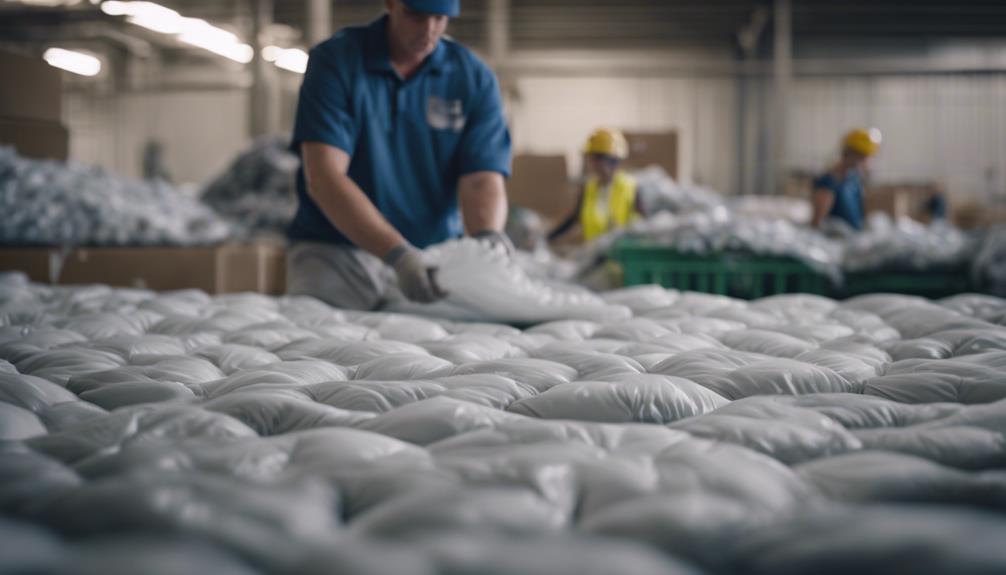
In our efforts to combat landfill overflow, it's crucial to explore how mattress pads can play a role in reducing waste. Recycling mattress pads is a critical step in the journey towards environmental sustainability. With approximately 20 million mattresses being discarded annually in the U.S., the impact on landfill space is significant.
By responsibly disposing of mattress pads through recycling programs, we can make a positive difference for both health and the environment. Every component of a mattress, including foam, can be recycled to help extend the lifespan of landfills and reduce our carbon footprint.
These small actions, when multiplied across many individuals and communities, can lead to substantial benefits for our planet. So, next time you're thinking about getting rid of an old mattress pad, consider recycling it to contribute to the collective effort in reducing landfill waste and promoting a healthier environment for all.
Frequently Asked Questions
Can I Put a Mattress Topper in the Bin?
Sure, we can't toss mattress toppers in our bins. Due to their size and materials, they don't fit the standard recycling program. Specialized processing is needed for the foam and fabric they're made of.
Improper disposal could harm the environment with more landfill waste. It's best to explore options like donation or contacting specialized recycling centers. Check with local waste services for proper guidance on mattress topper disposal.
Are Plastic Mattress Covers Recyclable?
Plastic mattress covers, commonly made from polyethylene or PVC materials, are recyclable. However, not all recycling centers accept them. It's important to check with your local facility for specific guidelines.
Some centers may require separating the cover from other materials. Proper recycling of these covers helps reduce plastic waste and environmental impact.
Always make sure to follow proper recycling practices for a sustainable future.
What to Do With an Old Memory Foam Topper?
When we've an old memory foam topper, there are several eco-friendly options worth exploring. Repurposing it into pet beds, pillows, or cushions can extend its usefulness.
Donating to charities or shelters helps those in need and reduces landfill waste. Cleaning the topper before recycling is essential for proper processing.
Advocating for foam recycling and raising awareness can promote sustainable practices. Let's make a positive impact together!
Can I Recycle a Feather Mattress Topper?
Feather mattress toppers aren't typically recyclable due to their natural materials, like feathers, which can break down and degrade. While traditional recycling processes may not accept them, consider donating to shelters or thrift stores.
Repurposing them for pet bedding or DIY projects can also extend their usefulness. Contact local recycling centers or waste facilities for specialized programs on feather bedding.
Recycling options may vary, so exploring different avenues is key to sustainability.
Conclusion
To sum up, recycling mattress pads isn't only environmentally responsible but also helps reduce waste in landfills.
By donating to charity, contacting manufacturers for recycling programs, and practicing eco-friendly disposal methods, we can extend the lifespan of these pads and contribute to a more sustainable future.
Remember, as the saying goes, 'One person's trash is another person's treasure.'
Let's do our part in making a difference for our planet.
